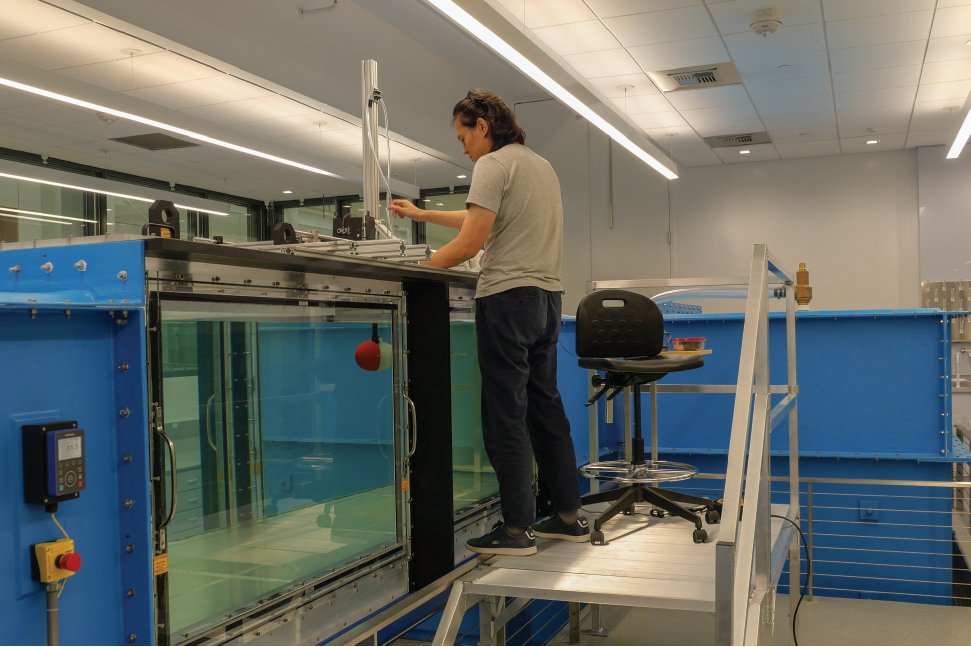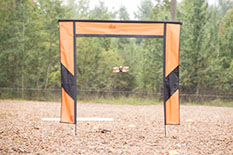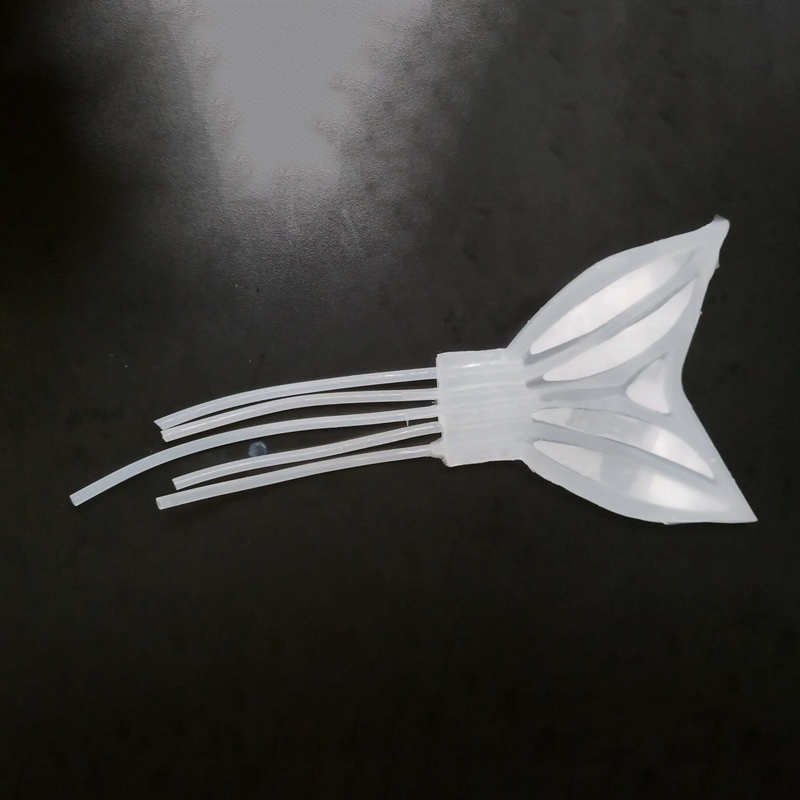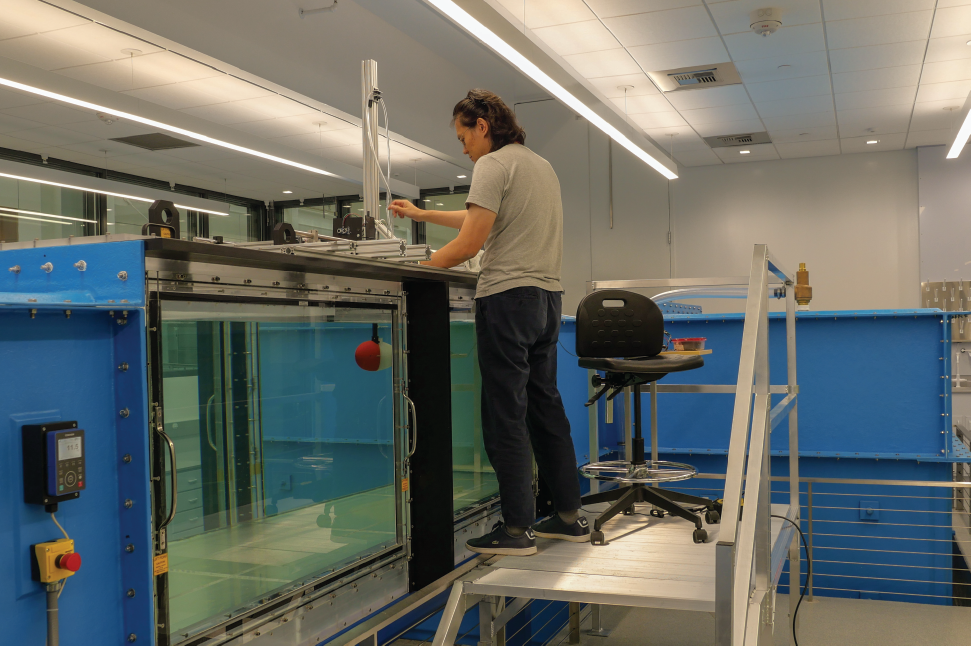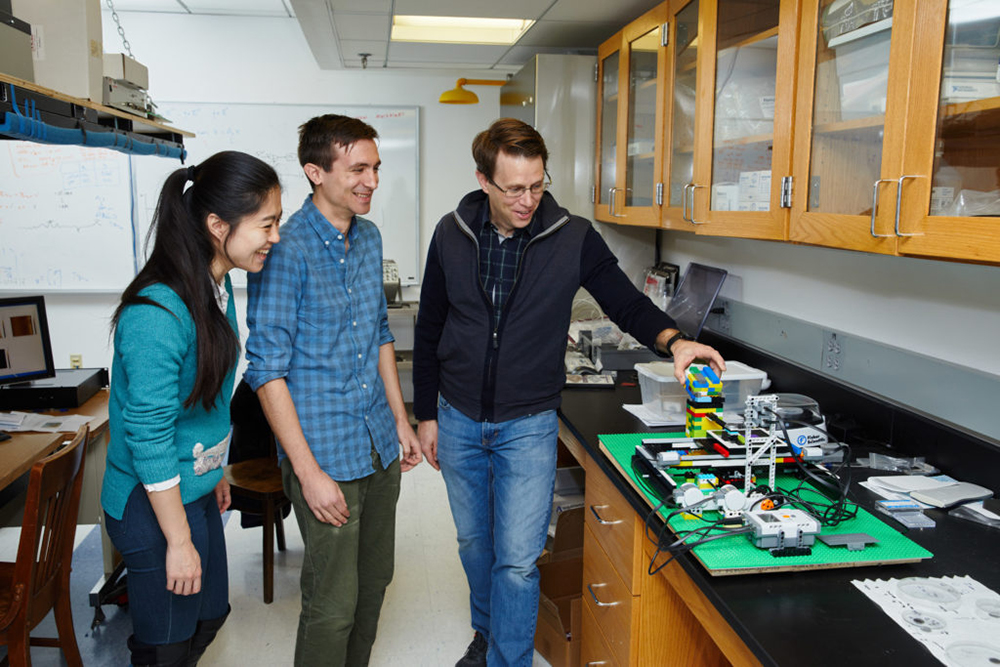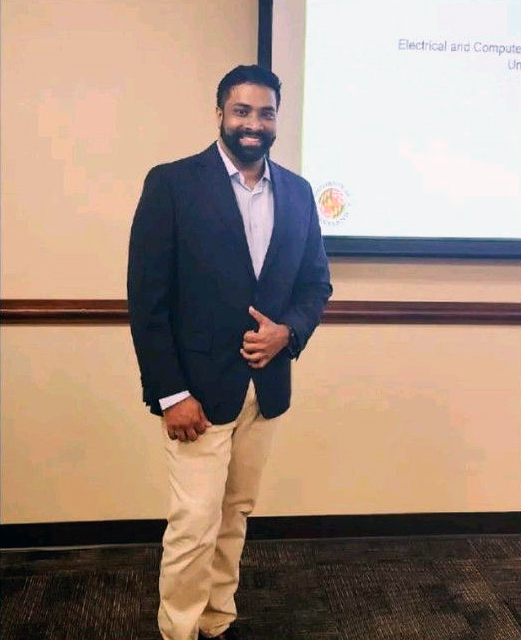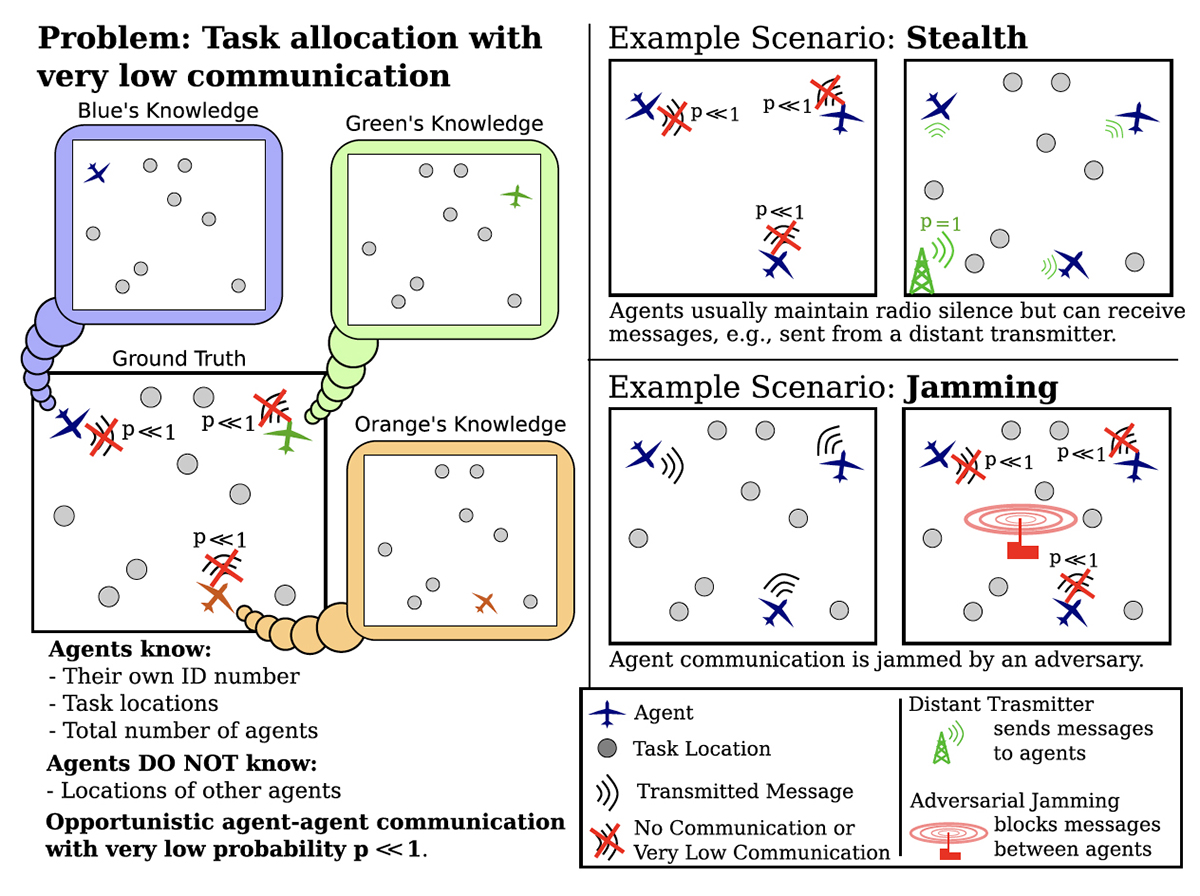News Story
Just keep swimming, and schooling
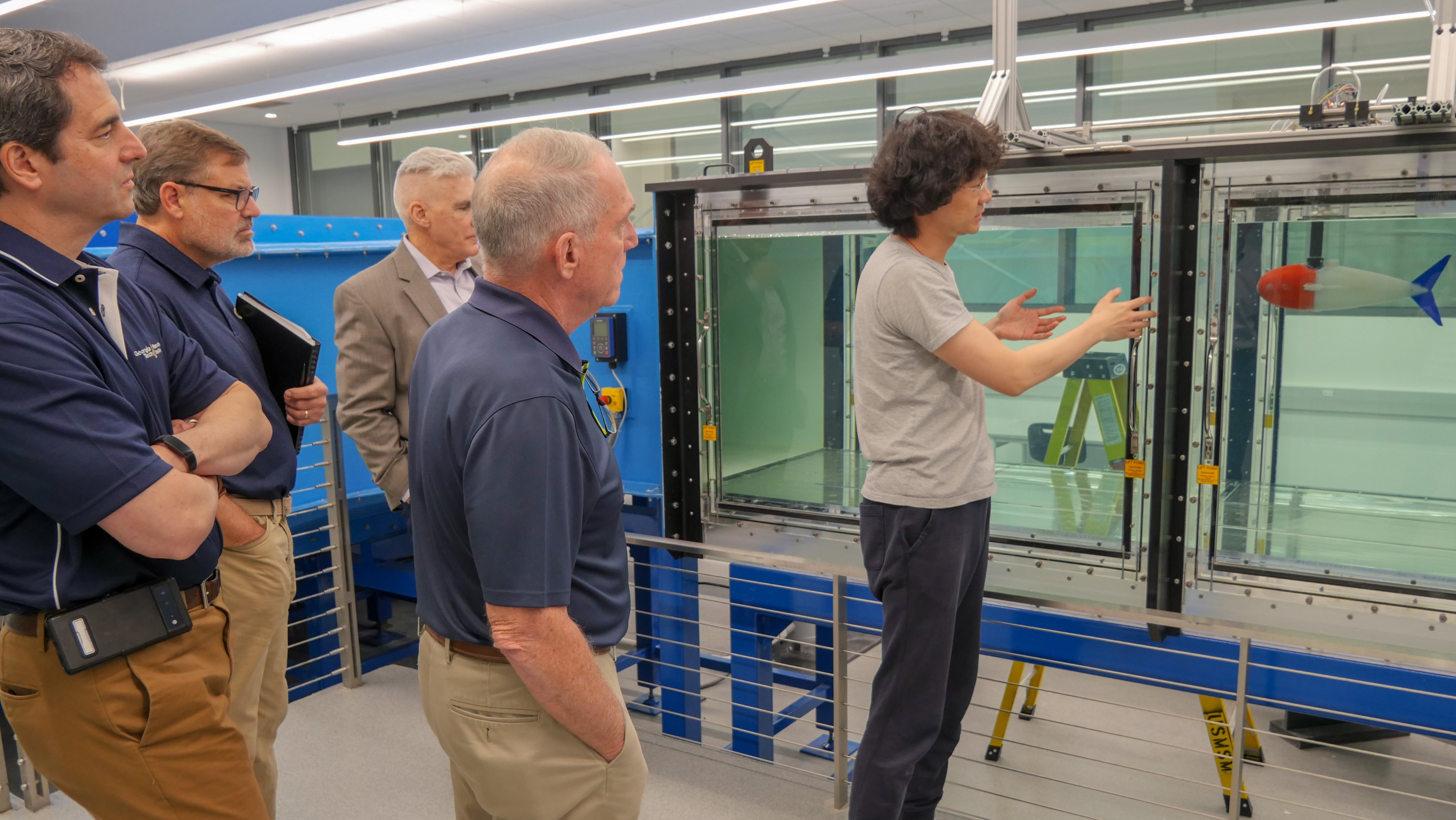
Maryland Robotics Center postdoc Wei-Kuo Yen shows a group from GTRI his research project
Maryland Robotics Center postdoc Wei-Kuo Yen is taking advantage of the MATRIX Lab water tunnel’s size and strength for his research on autonomous schooling robotic fish. Earlier this month, he showed the project to a group from Georgia Tech Research Institute (GTRI). Representatives travelled north to the MATRIX Lab to learn about the ecosystem we’re building in Southern Maryland and to discuss opportunities for collaborative autonomy.
The MATRIX Lab water tunnel is the second biggest water tunnel in the state of Maryland. It has a capacity of nearly 18,000 gallons and operates at 0.15 m/s (0.49 fps) to 1.50 m/s (4.92 fps). Its large size allows Yen to do experiments with larger fish and wider separation.
"Because USMSM has a huge water tunnel ... we can put our robotic platform inside the water tunnel to do the research we want," Yen told The Diamondback, UMD’s independent student newspaper, in an article published on October 28, 2022.
Pressure sensors and cameras on the robotic fish recognize water movement and the motion of other fish nearby, similar to the sensors on real fish. The robotic fish use the information to school together, and eventually find the most efficient location to swim, just like birds flying in a V-formation.
Sensor research has a wide range of applications. Pressure sensors and cameras could mean robotic service dogs for those who would need them. It could also mean a sense of touch for those who have prosthetics. According to research published by the National Institutes of Health National Library of Medicine, sensors can read the environment they’re in, and convert pressure, force, and position into electrical signals, which are then processed.
Published May 1, 2023
